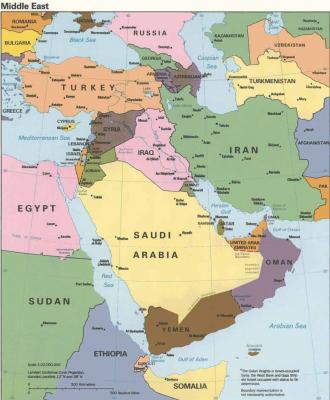Middle eastern countries have started to consider renewable energy. You have to wonder if maybe they know something about oil prices and supplies that we don’t?
Egypt is building a large solar parabolic trough collector plant. They are planning a 150Mw combines solar natural gas plant outside of Cairo.
Worldwide consumption of renewable energy will almost double by 2030, according to the Energy Information Administration, the data arm of the US Department of Energy.
The Middle East is set to see the most dramatic change, with an average yearly increase in its renewable electricity generation capacity of more that 2.5 times the global average.
Although last year’s high-level endorsement of nuclear power attracted headlines in Cairo and around the world, the Egyptian government has been pursuing other renewable sources of energy, most notably wind and solar. The Egyptian New and Renewable Energy Authority (NREA) hopes to provide 3 percent of the country’s electricity needs through renewable sources by 2010.
The technology planned for Kuraymat uses rows of parabolic-shaped trough reflectors to focus sunlight onto a tube filled with circulating liquid, which is heated as it moves through a field of reflectors. The liquid, which will reach temperatures of about 400 Celsius (752 Fahrenheit) at Kuraymat, can then be used to power a steam turbine.
…
And because Egypt, as well as much of the Middle East and North Africa, receives many more days of sunlight than Europe and North America, it is well suited for this type of power generation. Morocco, Algeria, and Iran are all building or planning parabolic-trough solar plants.
But North African countries are not the only ones that may benefit from their bounty of sunlight. Plans are under way that could provide Europe with 700,000 GW-hours per year of electricity from North Africa by 2050, through an interconnected electric grid, according to the European Commission’s Directorate-General for Energy and Transportation. (via)
I found the last part interesting about Northern African countries exporting their solar power to Europe. It presents an interesting future in which relatively poor African nations are able to make good money in a clean and renewable way. Could this lead to dependency on foreign sunshine? There are many implications and most of them seem positive. Learn more about parabolic solar collectors here.
Dubai is stepping up its renewable efforts. With ideas for biodiesel from jojoba, stirrings of talk about exporting solar energy to create jobs, and honoring renewable energy with its own award.
Admittedly these are very small starter steps, but the talk is there and its growing.
Drastic increases in oil prices and increased awareness of the limited availability of traditional fossil fuels is giving the new and renewable energy sector enormous momentum, with many of the world leaders in the field of photovoltaic (solar power), wind power and other environmentally friendly energy schemes accelerating product innovations that are being embraced across the region as alternative power sources.(via)
It seems like a no brain-er that one of the sunniest places on earth should embrace renewable energy, but the region has had access to such cheap energy from oil for such a long time that the process of moving away from fossil fuels may be a slow one. Lets hope that these nations can reposition themselves fast enough to keep up with the shrinking oil supply and growing demand for energy, not to mention the very important ecological ramifications.

I too think it would be great if North African nations could develop a renewable power export market. There is an initiative called the Trans-Mediterranean Renewable Energy Cooperation (TREC) that is trying to do just that (see http://www.trecers.net ).